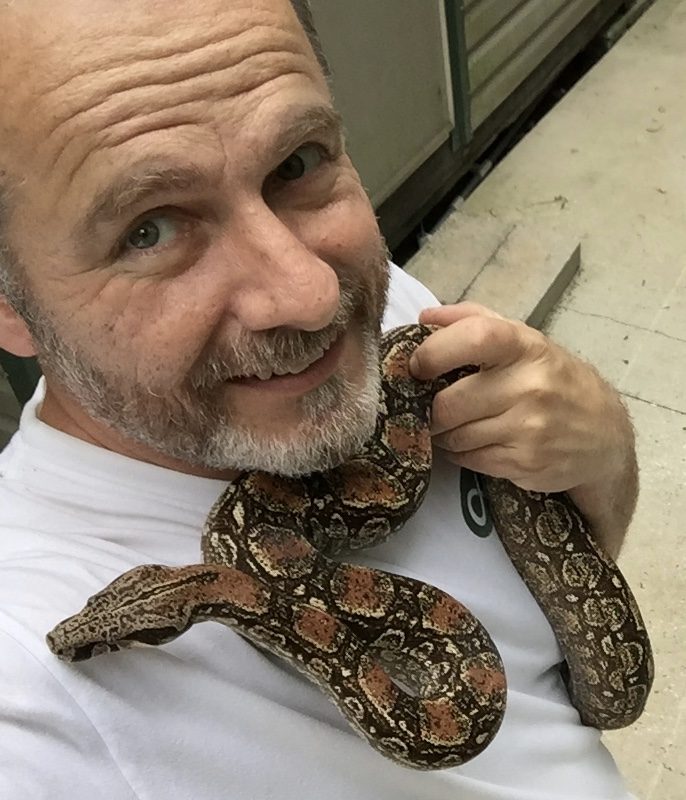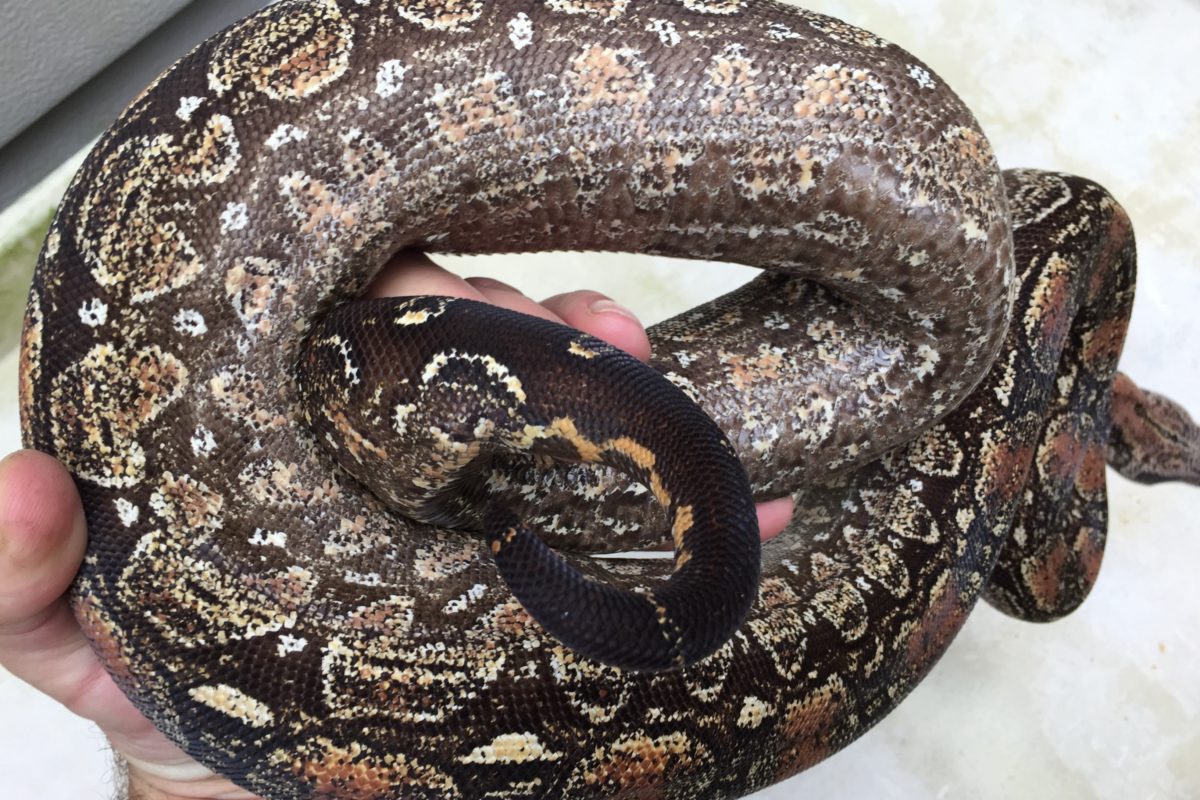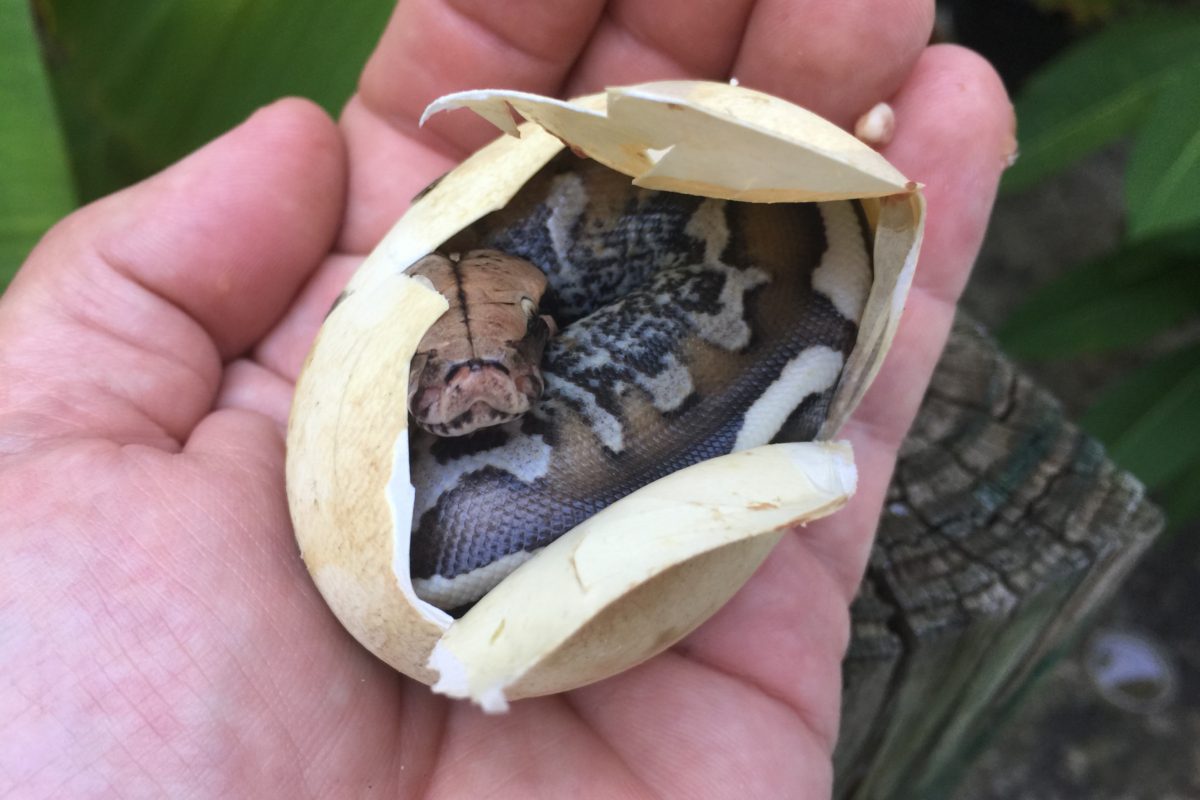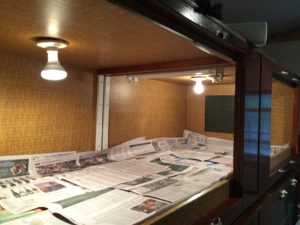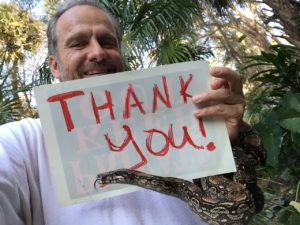Conservation Status – Argentine Boa
Ancient Reproductions not only wants to be a source of quality animals, but also quality information that helps captive keepers understand and appreciate the amazing reptiles in our care. Tuning into academic research is a great way to deepen your understanding of the reptiles you are keeping and can spur new thought on care and management. Please take the link to see this paper written by Tomas Waller, Patricia A. Micucci, Mariano Barros, Juan Draque and Candelaria Estavillo. Click here to access the paper.
Click here to access the International Reptile Conservation Foundation website.
Enclosures – Temp vs. Security
There are so many aspects to enclosures, I’m going to hit on just one basic concept in this post that might impact how you outfit your next enclosure. The concept is Temperature vs. Security and which one is driving the bus in your reptile’s mind? While we often don’t have unlimited space to provide our charges endless options, this concept could be one to consider the next time you “re-decorate” the interior of an enclosure or purchase something new in the future. Most of us have one “hide area” in our enclosures and one bask spot, traditionally at opposite ends. Therefore your snake (for this discussion, but this applies to a broader range of species) often can’t take advantage of both at the same time unless both are in the same place. Now your asking yourself…….Mmmm, while my snake is in the darker more private(and usually cooler) area of its enclosure, would it really prefer to be warmer? Should I provide multiple hide areas, some with heat? What benefit could there be to providing a bask opportunity along with maximum security? Ultimately, what desire outranks the other, temperature or safety? While you might be thinking……“Is Bob really just splitting hairs here?” I might be, but I think we should always strive for minimum stress while allowing our reptiles to choose the place they most want to hang out. I think this concept should be carefully considered for higher strung individuals, new imports, and with communal set ups. In these higher stress situations, allowing your reptile to bask a little while feeling totally secure could be critical to getting them to feed or to continue feeding while breeding in the cooler months for instance. Personally, I’m asking a lot of my reptiles and I’m working them hard and asking a lot of their bodies. If I can reduce stress and provide a more optimal temperature selection, I’m interested in trying it out. If you have a question regarding this topic, please email me at bob@ancientreproductions.com. Thank you! Bob Guerriere
Handling Argentine Boas
I have curious customers, which I love, and frequently get asked about the attitude of Argentine boas and how they respond to handling. I’ll address that question here along with some tips for a fun interaction. Argentine boas are a fantastic beast! I feel like a kid when I take one out for pure enjoyment. They can be an amazing and long lived captive reptile that can be enjoyed and handled. For newer keepers I’ll hit on some things to consider.
Safety first. It starts at the very beginning with getting your boa out of its enclosure. Since I feed my snakes in their enclosure, they are naturally curious if I have food when I open their enclosure. I address this by presenting them instead with something like rolled up newspaper or a clean snake hook and I gently touch them with it. After doing this all their life, this action typically shuts off their feeding response for me and realize this interaction is not about meal time. When you have your Argentine boa out of its enclosure, always obey the fundamentals of safe handling. To start with, NO food scents should be in the area or close by. Think about this when outdoors as well. This seems like common sense but you might not realize that your rat eating boa could get very excited by a domestic chicken and a chicken coup will carry a lot of scent. Be considerate of the people around you and don’t put them in close proximity without their clear permission. Be mindful to maintain a safe distance from other pets that could be interested in your boa and potentially harass or worse, harm it. Although we think our boas are super cool, remember to go out of your way to be respectful of others, its just good policy and everyone has a good time. Lastly, always think about containment, indoors and outdoors. A couch can be your enemy here. If you go outdoors, consider bringing a proper snake bag along just in case you go far from home base. What if you get approached by an inquisitive or aggressive dog while out for a walk? You might find a way to defuse the situation is to calmly bag your boa and separate yourself. Your snake might also become a bit “tired” (think small child) of being held and just need a break and a secure dark bag is good for that.
On the fun side of the equation. Taking your boa out to handle, even outdoors can be fun for both you and your pet. Your boa will get great exercise and be enriched by the increased room to roam, fresh air and sensory opportunities. You might even observe an interesting behavior you’ve never seen before. Sun light will show off your boa’s coloration in all its glory so its a great time for lots of pics! Be safe, keep your boa secure and I hope you both have a wonderful time!
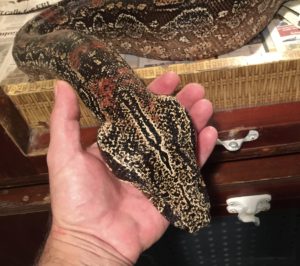
With infrequent but thoughtful and respectful handling, this 10′ long, 50lb Argentine boa is very gentle and enjoyable to interact with.
Moon and Reproduction
January 29th
Its cold for many of us in the US at this time and our boas are breeding. Many of you in the Northern parts of the US are in the home stretch of your breeding season while folks in Florida like me are really just starting. Regardless of where you are and what your climate is like, I wanted to quickly hit on moon phase a little bit. I started paying attention to the phase of the moon and what my snakes were doing when I met Eugene Bessette back in 1988 or so. Eugene is the founder of Ophiological Services in Archer Florida, just down the road from me. When I first visited his place he had these great maps up on the wall showing all of the various phases of the moon throughout the year. In talking to Eugene and then working with him starting in 1990, it became apparent that he correlated various breeding oriented activities to what moon phase we were experiencing at that time. It’s hard to argue with the strong relationship that the moon has to the pulse of our environment and the animals within it. So, as a wildly passionate about reptiles hungry for knowledge young man, I started paying attention to the moon phase and not just observing events that correlated with a given moon phase, but actually using the moon in my breeding and management plan.
Case in point. Right now today in North Central Florida we are having a cold front come through that has brought a nice rain. With this the barometric pressure has dropped, humidity has gone way up and the temperature is trending downward aggressively, AND, in two days the moon is full. For me these weather fronts that correlate with a new or full moon are events I like to mimic in our breeding management. How do we do that? By trying to schedule pairing, misting, and big temperature fluctuations as they are happening outdoors. I don’t go to the extremes in temperature for example, but I will definitely attempt to mimic what is going on outdoors with our snakes indoors. Try this yourself and I think you could see an increase of activity and breeding behaviors in your reptiles. And a BIG thanks to Eugene, a now close friend and mentor for introducing me to the moon!
Feeding Boas In Cool Weather
January 8th 2018
It’s been a chilly last few days with lows in the 20’s and 30’s, but I need to get more weight on some Argentine boa females so I fed the females in the photo two days ago. They all have noticeable food lumps being fed multiple large rats each. This morning when I took their temperature with a non contact thermometer, the lowest body surface temperature was 66 degrees Fahrenheit. In the heat of the afternoon, the warmest female registered a 84 degrees Fahrenheit body surface temperature. My basic policy with breeder females in general is that if they want to eat, I’m open to feeding them. The one condition is unless the female is already very heavy. In that case, I will taper her food as she approaches optimum weight. I believe this honors the “wild” instinct as food is too much of a precious resource to be passed on. Keeping breeding and hopefully pregnant females eating really helps the weight loss of breeding and the overall stress of production. Care does need to be taken that the snakes receive enough heat to properly digest the meals and not stress the snakes. Ultimately what works for your conditions is a decision that you need to make based on the environmental conditions you are providing your boas.
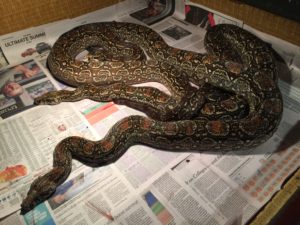
Smaller Argentine boa breeder females that I wanted to feed through breeding season. Their enclosure sits on the floor only a couple inches off the ground and is very cool. While I like the cool for breeding, care needs to be taken when feeding in cool weather with an enclosure in a cooler position.
Our Care and Breeding Log
I asked for some feedback on topics that interested you and what I heard was that many of you wanted to get insights on our techniques and methods. A range of topics came up from rodent production through various aspects of boa and python care and breeding. As the year is just beginning, I decided the easiest way to produce content of value and interest would be to start sharing current events and show our breeder animals going through a real calendar year. The observations and insight shared will be seasonally relevant and in this way we’ll build a resource of good information together. I’m always up for questions and feedback so please leave it here or on our Ancient Reproductions FB page.
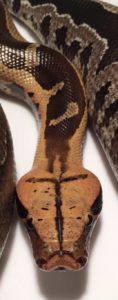 Looking Forward to it!
Looking Forward to it!
Bob Guerriere
Ancient Reproductions
Thanks so much for stopping by. I realize that in addition to looking at our animals, that you might be curious about who the actual people are that produce the reptiles you see here. Understandable. Where you wondering what is up with the gardening pic? I wanted to show you that in addition to reptiles, I’m also passionate about growing plants and producing some of our own food in a way that is friendly to the earth we live on. Here on our small farm we do things like composting our snake and rodent waste, routinely survey for and remove invasive plants, while always striving to be as water conscious and energy efficient as possible. I also want to do any small thing that I can to help the local wildlife that visits or calls our property home. I believe most of the time, this is about just leaving some areas undisrupted while fostering things like plant diversity wherever you can. These are just small things we do to minimize our impact while we enjoy this fun and rewarding opportunity to work with amazing plants and animals.
If you have any questions or comments, please feel free to email me. I look forward to hearing from you!
Thank you!
 Ancient Reproductions
Ancient Reproductions


